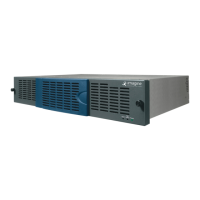FR6822+ Frames
Installation and Operation Manual
51
Copyright © 2008-2011, Harris Corporation
Browsing a Module
Click a module in the navigation pane at the left side of the HTTP browser screen, or a slot
in the Frame View, to view controls specific to that module.
Figure 4-19 Module Parameters in the 6800+ Control Interface
Below the Parameters title bar, the Location row indicates the position in the frame
hierarchy that is currently being displayed. The Choices row indicates further navigation
options below the screen that is currently displayed. If the screen is displaying the bottom
navigation level, the Choices row is empty.
In the main portion of the screen, controls are divided into groups:
Parameters—Often further subdivided so various pages of parameters appear in the
right side of the screen, with nested sub-directories on the left.
Each module has specific parameters. See the documentation for a module to view
complete descriptions of that module’s unique controls.
Alarms—Displays control settings for all alarms on the module, input, or frame.
Depending on the type of module, controls and options may vary. See the
documentation for each module for complete descriptions.
Video Streaming—Where supported, displays a thumbnail from the module. If the
selected module does not support this feature, or if the firmware of the 6800+ETH
module does not support this feature, then this option will not appear in the web
interface.
Configuration—Contains the following options:
Version—Read-only display of hardware and software version for the module.
Presets—Allows you to save and load pre-defined parameter settings on a
module-by-module basis. See Using Presets With 6800+ETH on page 55 for
more information.
Input—Appears on QSEE6800+ modules only. Open the + to see all the module inputs
to the QSEE6800+ module. Each module has its own Parameters, Alarms, and
Configuration options.

